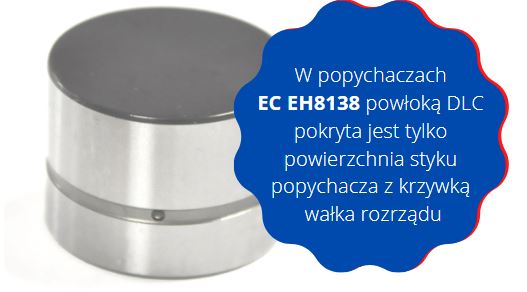Bearings – What Should You Know?
Bearings – What Should You Know?
Plain bearings (commonly known as bearing shells) are bearings that do not have moving parts. Bearings are necessary to locally separate surfaces that move relative to each other. This is achieved thanks to a thin lubricant layer that generates pressure capable of withstanding even very high loads.
There are bimetallic and trimetallic bearings. Bimetallic bearings consist of a steel support layer with a bronze coating. Trimetallic bearings consist of a steel support layer covered with a bronze alloy with a thin galvanic, polymeric, or sprayed layer. Depending on the stress of the combustion unit, appropriate bearing shells are selected. Bearings must possess a range of (contradictory) properties, such as:
- the ability to permanently withstand significant mechanical loads,
- the material’s ability to absorb hard particles on the sliding surface,
- resistance to seizure,
- resistance to wear,
- resistance to corrosion.
Remember that bearing shells have their dimensions and specific features like holes, grooves, and locks. Holes and grooves additionally increase lubrication on the journals, while reducing oil pressure in those areas. Locks are only meant to facilitate the installation of the bearing shells in supports and do not prevent the rotation of the half-shells on the journals.
Modern engines have Sputter or polymeric bearing shells. Sputter bearing shells are metallized using cathodic sputtering. This makes them significantly more durable. In connecting rod bearings, Sputter is usually mounted on the side of the connecting rod (from the top), and in the main bearings, the lower half-shell.
Polymeric bearing shells are an innovative material based on aluminum with a polymeric coating. The alloy’s strength is significantly greater than conventional aluminum alloys.
Properties of polymeric bearing shells:
- high load capacity – greater than that of tri-metal bearings (14,500psi / 100 MPa),
- good anti-friction properties and the ability to operate in non-hydrodynamic lubrication mode (direct contact),
- high wear resistance surpassing the wear resistance of tri-metal bearings,
- free of lead and other hazardous substances,
- excellent embeddability – the ability of the bearing material to absorb foreign particles circulating in the oil,
- increases the durability of the bearing shells due to exceptional wear resistance and strength,
- improves fuel consumption and lowers CO2 emissions due to reduced friction.
Podobne wpisy

DLC (Diamond-Like Carbon) Coatings in Valve Lifters
Carbon-based DLC (Diamond-Like Carbon) coatings are the best solution wherever wear resistance and good sliding properties are required, such as […]

Gaskets
A gasket is a sealing element of a strictly defined shape and size, placed between two components to achieve a […]

Connecting Rods – What You Should Know
Connecting rods are critical elements in the piston-crank system. They act as a link between the crankshaft and the piston. […]